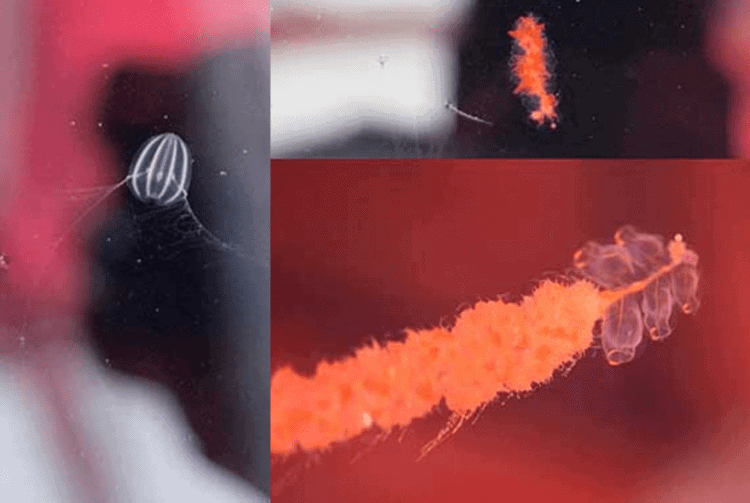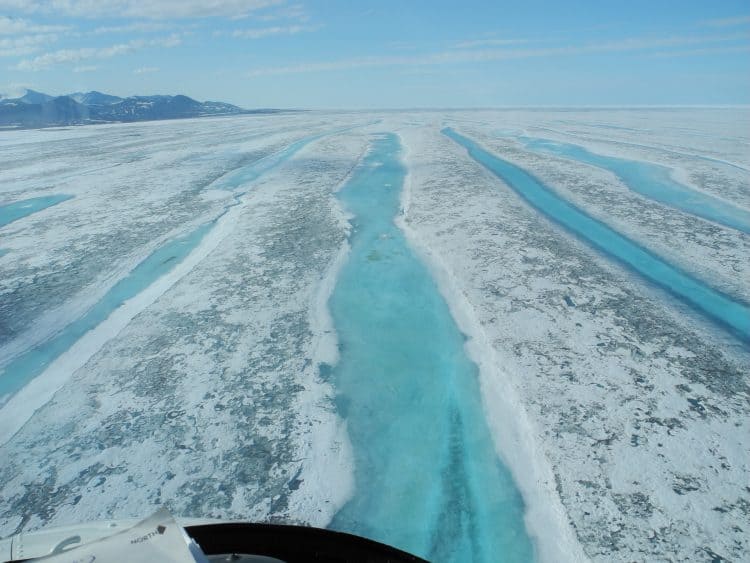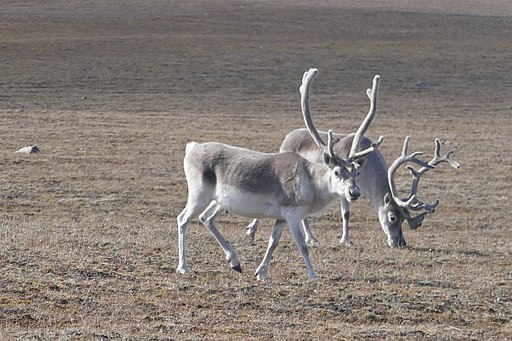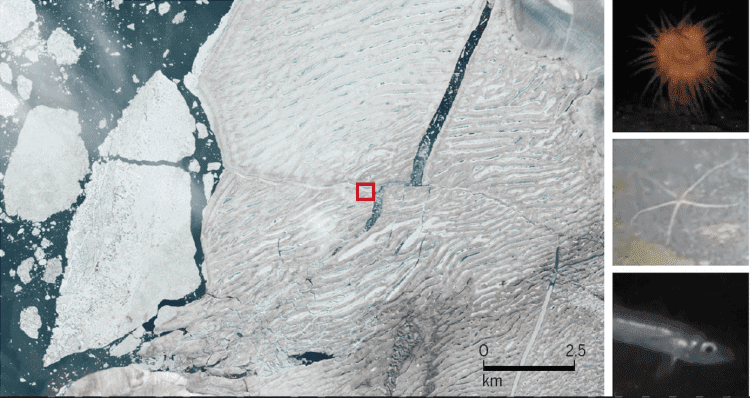Using tools which included video taken by a robot submarine, a Canadian research team recently discovered an amazing array of plants and animals, living in the heart of Milne, the very ice shelf which broke apart just this summer north of Ellesmere Island (above), losing almost half of its mass.
Dr. Derek Mueller, Professor of Geography and Environment Science at Ottawa’s Carleton University, is a team member who’s worked in the area for decades. In an email to FoW, he provides more detail.
“There are really neat microbial mats (communities of micro-organisms including cyanobacteria, green algae, diatoms, heterotrophic bacteria, and viruses) that live on the surface of the ice shelves. Similar microbial mats can be found in ponds on the bottom of shallow lakes… Inside the sea ice and clinging to its underside are communities of algae and lots of kinds of phytoplankton in the ocean as well.”

So what might the world lose if these organisms disappear with the ice?
“This Last Ice Area will hopefully serve as a refuge for ice-dependent species,” Dr. Mueller explains, “both on land and in the marine environment.
We know relatively little about these organisms – how they are adapted to their surroundings, how unique they are (or perhaps how similar they are to their cousins in analogous environments in the Antarctic) and many more questions! We won’t get to ask these questions if global temperatures rise unabated and this ice melts away.”
The images above come from just a tiny part of the vastness Dr. Mueller refers to, called the “Last Ice Area.” And, in the face of a rapidly-warming Arctic, events involving the break-up of sea ice are all too common there.

Here’s how Dr. Mueller describes the LIA.
“‘The Last Ice Area’ means the region in the Arctic Ocean where sea ice is most likely to survive in a warming world.”
It sprawls for up to 25 hundred kilometres along the coastlines of northern Canada and Greenland and well out to sea. It’s there that the thickest sea-ice in the entire Arctic can be found. Because of its importance as a home for ice-dependant marine life and its cultural significance to the Inuit people living there, they and the World Wildlife Fund have long promoted it as worthy of conservation. (Local Inuit elders call it “Similijuaq – place of the big ice.”)
Dr. Mueller and a colleague, Dr. Warwick Vincent of Laval University in Quebec City, are now sounding the latest alarm bells over why additional measures are needed to protect the area from increased human activity.
While Dr. Mueller remains optimistic for the future, he suggests, further steps need to be taken to expand those existing, protected areas.
“The good news is, we do still have a window to make a difference. We can augment the existing conservation areas – the marine one, Tuvaijuittuq MPA and the terrestrial one – Quttinirpaaq National Park, with more optimal coverage of the LIA – from Greenland in the east to the NWT in the west and perhaps there could be more protection by expanding across the coastal region reaching both inland and offshore.”

“This would recognize the important interconnection between the terrestrial and marine environments. With vulnerable ice-dependent ecosystems protected from human activity, this will guarantee the removal of multiple environmental stressors. The big stressor is, of course, climate change. But, if we can make good on our Paris commitments to reduce greenhouse gas emissions globally, then the chances of the LIA remaining, increase dramatically.”
The team’s findings were published recently in Science Magazine.
Lead Image: An aerial view shows the breakup of the Milne Ice Shelf in late July 2020 (left) and animals found living in its ice cavity (right) at the site boxed in red . The ice shelf is in the so-called Last Ice Area, which observations and modeling show as the band of thickest sea ice in the Arctic Ocean that occurs along the northern coast of Canada and Greenland – PHOTOS: (LEFT) JOSEPH MASCARO/PLANET LABS INC.; (RIGHT) WATER AND ICE LABORATORY/CARLETON UNIVERSITY
What you can do
Support ‘Fighting for Wildlife’ by donating as little as $1 – It only takes a minute. Thank you.
Larry Powell
I’m a veteran eco-journalist living in Shoal Lake, Manitoba, Canada. I have a life-long love of wildlife & natural places. After working for radio and TV stations for about 30 years, I've turned to science writing as a freelancer specializing in the Earth Sciences. I’m a member of the Science Writers & Communicators of Canada and the American Association for the Advancement of Science. I’m authorized to receive embargoed material through the Science Media Centre of Canada, the Royal Society, NatureResearch and the World Health Organization. This allows me advance access to important, peer-reviewed research often warning of habitat loss and the threat of extinction facing many wild species, usually thanks to human intrusion and intervention by the hand of man. They then often become "hot-off-the-press" stories which are ready to publish the moment the embargoes are lifted. I publish www.PlanetInPeril.ca (PinP) "Where Science Gets Respect." I own professional photographic gear and am sometimes able to enhance my stories with my own images.
- Web |
- YouTube |
- More Posts(14)







Leave a Reply